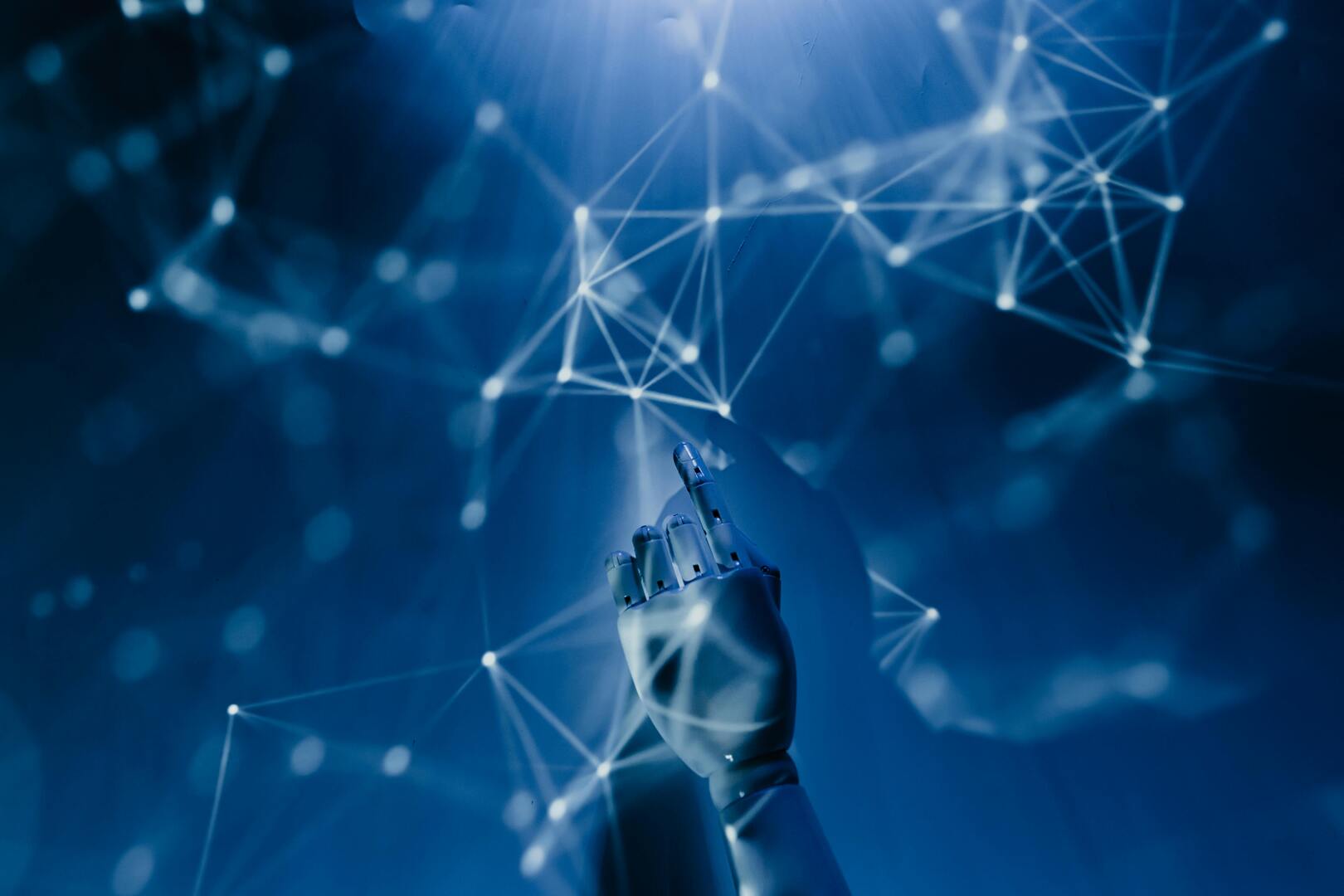
In the realm of web design, AI-generated solutions are reshaping traditional practices. This blog dives into the essence of AI-generated web design and its increasing prominence in the industry. We explore both its advantages, like efficiency and personalisation, and its challenges, including limitations in creativity and privacy. As AI continues to revolutionise design processes, understanding its implications becomes crucial. Join us on this journey as we unravel the complexities, weigh the pros and cons, and envision the future of web design in the AI era.
What is AI-generated web design?
AI-generated web design refers to the process of using artificial intelligence algorithms and machine learning techniques to automate various aspects of website creation, including layout generation, content creation, and optimisation.
How is AI use growing in web design?
In recent years, the integration of AI technologies into web design has surged, revolutionising traditional design practices. AI-powered tools and platforms offer designers and developers new capabilities to streamline workflows, improve efficiency, and create more personalised user experiences.
Four Pros of AI-Generated Web Design
1. Efficiency and Time-saving Benefits
AI-generated web design streamlines the design process, automating repetitive tasks such as layout creation, content population, and optimisation. This efficiency translates into significant time savings for designers and developers, allowing them to focus on higher-level creative tasks and strategic decision-making.
2. Consistency in Design Elements and Layouts
AI ensures consistency in design elements and layouts across web pages. By analysing patterns and user interactions, AI can maintain a cohesive visual identity and user experience throughout the website. Consistent design fosters brand recognition and trust among users, enhancing overall user satisfaction and engagement.
3. Adaptability to User Preferences and Behaviour
AI-powered web design tools have the capability to adapt to user preferences and behaviour in real-time. By analysing user data and interactions, AI algorithms can personalise content, recommendations, and user interfaces to better meet the needs and preferences of individual users. This adaptability enhances user engagement and encourages longer interactions with the website.
4. Enhanced Data Analysis and Personalisation Capabilities
AI enables advanced data analysis and personalisation capabilities in web design. By analysing user behaviour, demographics, and preferences, AI algorithms can generate valuable insights to inform design decisions and optimise user experiences. Personalised content and recommendations tailored to individual users can significantly enhance user engagement and conversion rates.
Four Cons of AI-Generated Web Design
1. Lack of Creativity and Originality
Despite its capabilities, AI may struggle to produce truly creative and original designs that resonate with human sensibilities. While AI can generate designs based on existing patterns and data, it may lack the intuitive understanding and creativity that human designers bring to the table, resulting in generic or uninspired outcomes.
2. Limited Understanding of Human Nuances and Emotions
AI's algorithms may have difficulty understanding and interpreting complex human nuances and emotions. Design elements that rely heavily on emotional context or cultural references may be challenging for AI to comprehend accurately. As a result, AI-generated designs may lack the emotional depth and resonance that human-designed experiences can evoke.
3. Dependency on Data Quality and Training Algorithms
The effectiveness of AI-generated web design heavily relies on the quality and diversity of the training data used to develop its algorithms. Biases or inaccuracies in the data can lead to skewed or flawed design recommendations. Moreover, AI algorithms require continuous refinement and updating to adapt to changing trends and user preferences, posing challenges for maintaining accuracy and relevance over time.
4. Potential Privacy and Security Concerns with User Data
AI-powered web design tools often rely on extensive user data to personalise experiences and make design recommendations. However, this reliance on user data raises concerns about privacy and security. Inadequate data protection measures or improper handling of sensitive user information can result in privacy breaches or security vulnerabilities, undermining user trust and damaging brand reputation. Striking a balance between personalisation and user privacy remains a significant challenge for AI-generated web design.
Future Implications and Considerations
Predictions for the Evolving Role of AI in Web Design
As AI technology continues to advance, its role in web design is expected to evolve significantly. Predictions suggest that AI will play an increasingly central role in automating repetitive tasks, enhancing personalisation, and optimising user experiences. From predictive design recommendations to AI-driven content creation, the future of web design holds exciting possibilities for innovation and efficiency.
Ethical Considerations and Responsible AI Usage
With the growing reliance on AI in web design, ethical considerations surrounding its usage become paramount. Designers and developers must navigate complex ethical dilemmas, such as transparency, accountability, and bias mitigation, to ensure responsible AI deployment. Upholding principles of fairness, transparency, and user consent is essential to foster trust and mitigate potential harm arising from AI-generated experiences.
Strategies for Integrating AI while Preserving Human Creativity and Intuition
While AI offers valuable capabilities in web design, it is essential to preserve human creativity and intuition in the design process. Designers should view AI as a tool to augment their creativity rather than replace it entirely. Strategies for integrating AI effectively include fostering collaboration between humans and machines, leveraging AI's analytical capabilities to inform creative decisions, and retaining human oversight to ensure design integrity and user-centricity.
By embracing these considerations and adapting to the evolving landscape of AI-driven web design, designers can harness the full potential of AI while upholding ethical standards and preserving human-centric design principles.
Conclusion
In conclusion, AI-generated web design, we've highlighted its benefits such as efficiency and personalisation, along with challenges like creativity and privacy. It's vital for designers to carefully weigh these pros and cons. While AI streamlines processes and enhances user experiences, it also raises ethical and creative concerns. Continued research and collaboration are essential to navigate these complexities responsibly and shape a future where AI-driven designs uphold ethical standards while fostering innovation.
Looking to redesign your website, contact us today!




